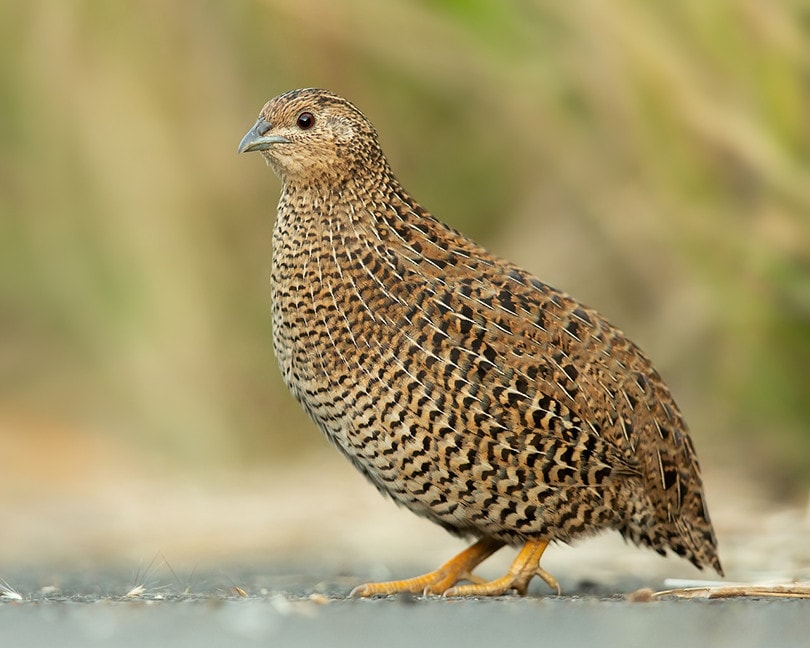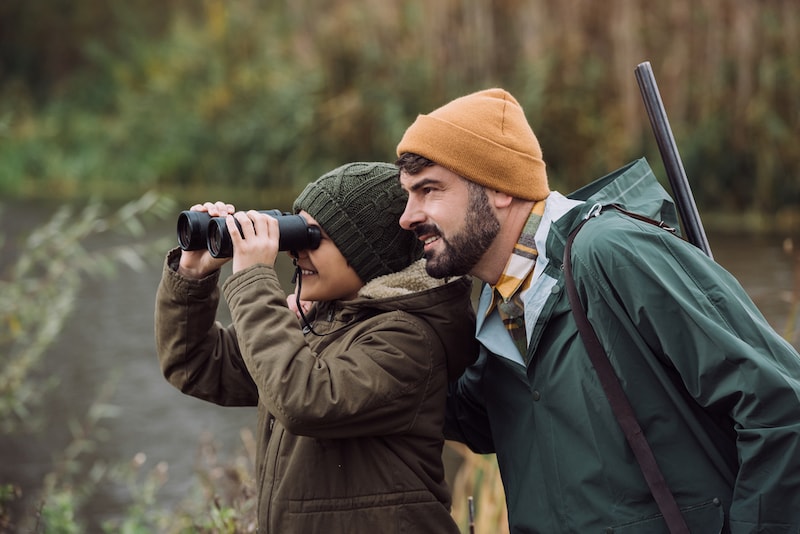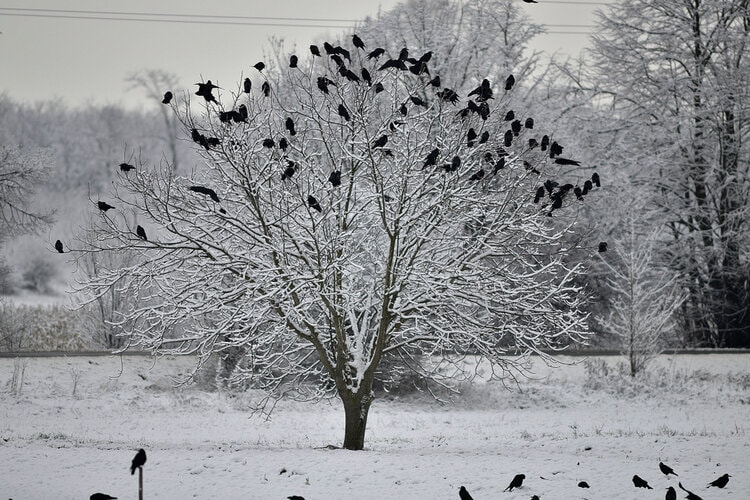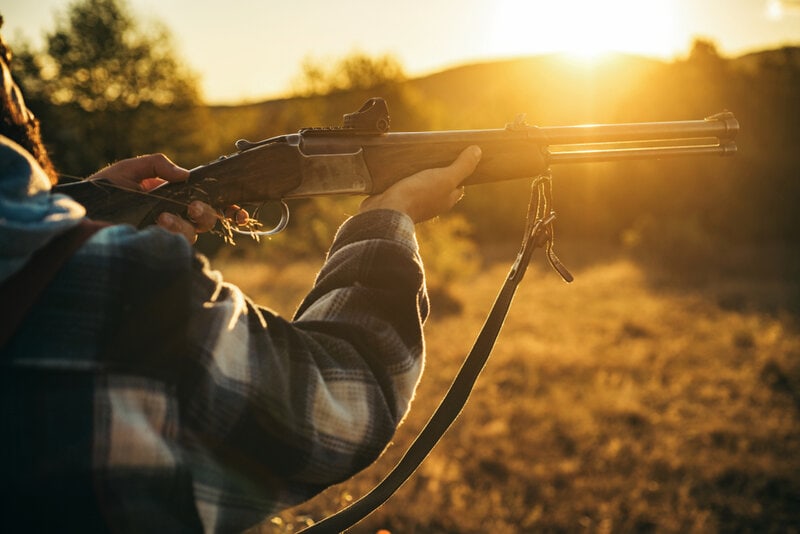How to Hunt Quail – 8 Basic Tips & Tricks
Last Updated on

Game birds are a favorite among many dedicated hunters for their rich, better-than-chicken taste, despite the fact that there is so little meat to be gathered. In this article, we’ll go in-depth on what you need to know about hunting these pheasants with eight basic tips that will get you closer to bagging your next bird.
Remember to always follow the rules and regulations in your local area, as they can vary from state to state (or country to country), and don’t forget to wear bright orange in your hunting ventures.

How to Hunt Quail – 8 Basic Tips & Tricks
Before You Begin

Make sure your firearm is working correctly. You don’t want to get skunked only because your weapon wasn’t performing as intended. It poses a serious hazard to your safety. Don’t forget ammunition and remember to wear bright orange to ensure other hunters are aware of your presence.
Use a non-scented hunting body wash to prevent animals from smelling you. This isn’t as important for birds, as their smell isn’t very good, but it could be a good cause if there are other mammals around that you want to hunt as well.
1. Hunt at Dawn or Dusk
Quail are a heck of a lot easier to find if you can get out of bed early, as it’s their most active time to communicate with each other. If you can plan to get to the hunting location before sunrise or after sunset, the chances of seeing them are higher, and it’s likely that there will be an entire flock.
If you’re not a morning person, don’t fret. After the sun goes down, they will still be out there, but you’ll lose light rather than gain it, so you may need to bring a headlamp or flashlight for proper visuals. Unfortunately, this artificial lighting could set off any birds you have the chance to see.
2. Winter and Late Autumn Are the Best Seasons

Bird tracks can be found much easier in the winter if you can get into the woods after a fresh snowstorm. Although their marks are small, you can use a magnifier to see them more easily. Just keep in mind that it can sometimes be difficult to trace them since their flight can disrupt a steady path.
3. Find Their Habitat
Quails live in a variety of places, but they generally like to stay in open wetland or grassland areas during dawn or dusk while they move to the forests for cover during the middle of the day.
4. Use a Shotgun

This should be the most obvious and fundamental tip on our list, but there are people out there who are just getting started and don’t know this basic rule. Firing a shotgun will increase your chance of hitting a target and will not damage the bird in a way that ruins the entire body. A 12-gauge or 20-gauge should do the trick, but there are exceptions.
Do not use a bow—it will be incredibly difficult to hit a flying bird (unless you are very skilled), but even if you do, the meat will likely be a waste.
5. Stay Silent
Most birds have impeccable hearing skills, and it’s no different with quails. Any sudden movements or sharp noises will be picked up by pheasants instantly. This can somewhat contradict our above tip, as snow or leaves can louden our footsteps. We recommend using slow, methodical strides to minimize loudness. Watch out for leaves and branches that might make noise if you step on them.
6. Quail Calls Are Worth a Try

In contrast to our previous statement, bird calling is one of the most effective ways to attract a quail. A standard quail call costs less than $50, so it isn’t a steep investment.
7. Stay Covered
The field of view of a bird is much wider due to their eyes being set on the sides of their head where they can see things move around them. Look for bushes, trees, boulders, or tall grasses that you can hide in so you can find them before they find you.
8. Bring a Dog
If you’ve tried everything we’ve mentioned but can’t seem to bag a bird, it might be time to call in some backup. There’s a reason why pups are so common among bird hunters. Canine instincts are far better than humans, whether it’s smell or sound. A hound dog bred for bird hunting, such as a Labrador Retriever, Spaniel, or Shorthaired Pointer, are excellent breeds to increase your search success, hunting speed, and retrieval rate. Especially since you’ll be out before or after the sun is up, a dog will use its nose to find its prey in the dimly lit environment.
If you don’t have a trained canine to aid you, it’s a good idea to check with friends and other hunters to see if they can tag along. We do want to note that dogs aren’t always the best options in a birding situation. However, it’s definitely worth a try.
You might interested:
Featured Image Credit: terforeign, Pixabay
About the Author Robert Sparks
Robert’s obsession with all things optical started early in life, when his optician father would bring home prototypes for Robert to play with. Nowadays, Robert is dedicated to helping others find the right optics for their needs. His hobbies include astronomy, astrophysics, and model building. Originally from Newark, NJ, he resides in Santa Fe, New Mexico, where the nighttime skies are filled with glittering stars.
Related Articles:
How to Collimate Binoculars: 9 Expert Tips
How to Clean a Rifle Scope: 8 Expert Tips
How to Choose Binoculars for Bird Watching: 10 Expert Tips
10 Types of Hummingbirds in Arkansas (With Pictures)
8 Types of Hummingbirds in Nebraska (With Pictures)
5 Types of Hummingbirds in Idaho (With Pictures)
3 Types of Hummingbirds in Mississippi (With Pictures)
8 Types of Hummingbirds in Kansas (With Pictures)
